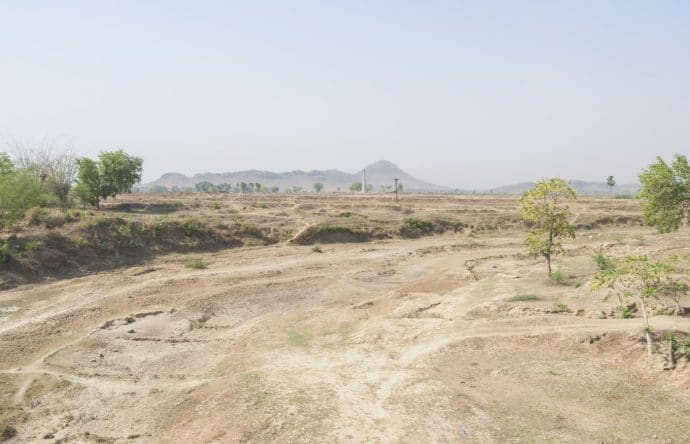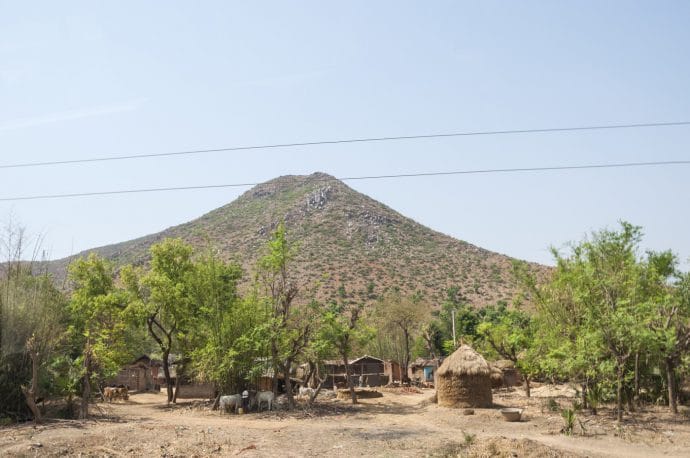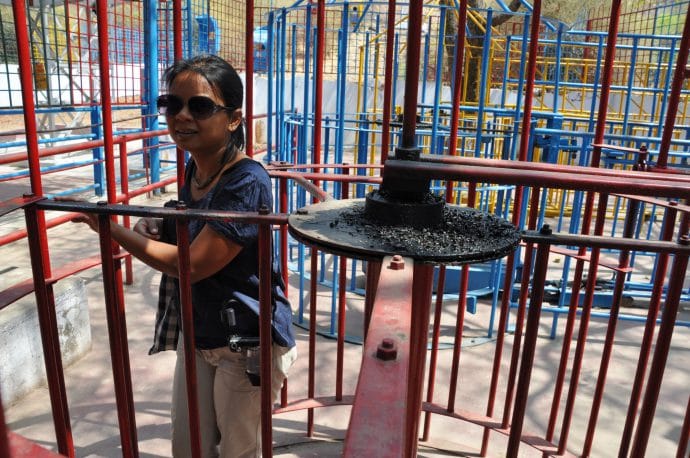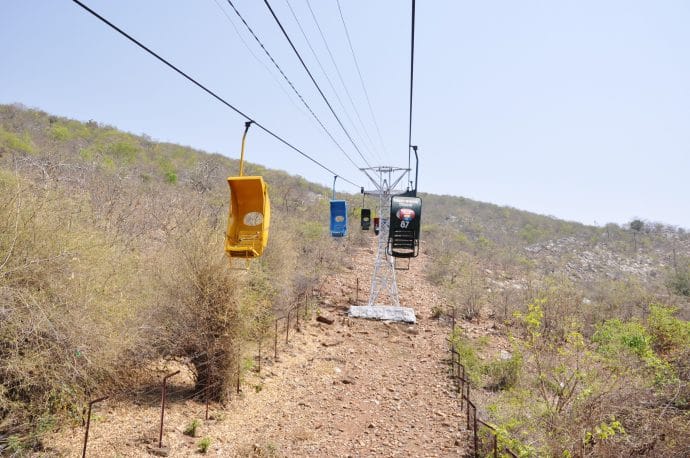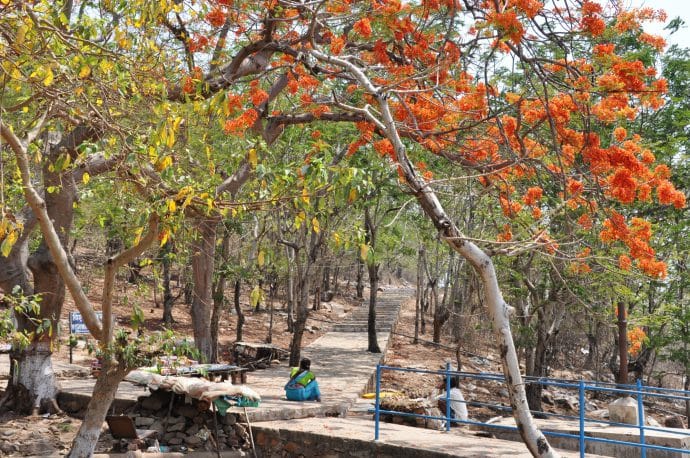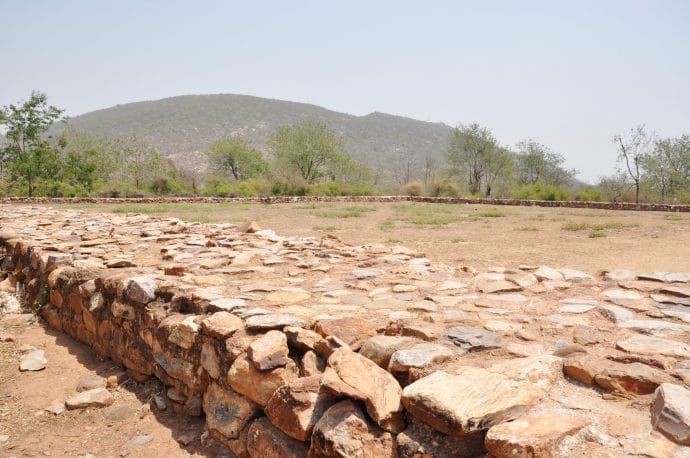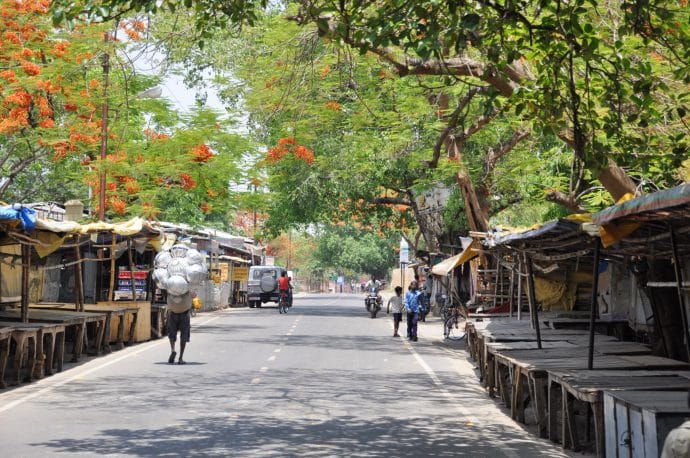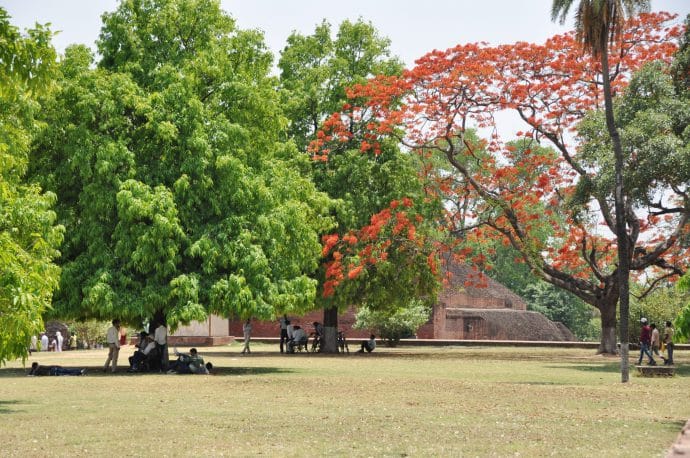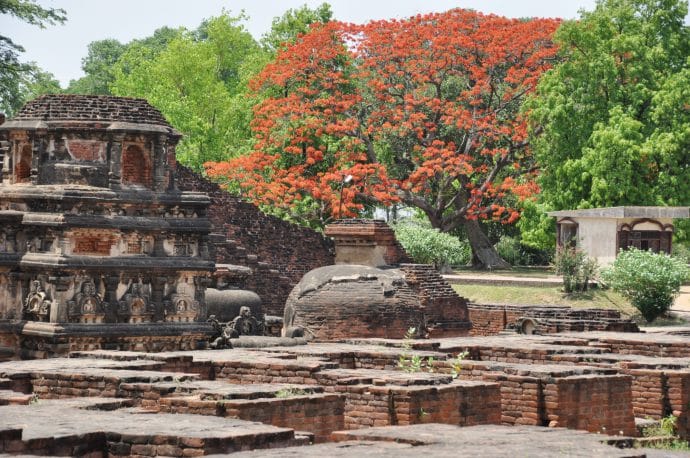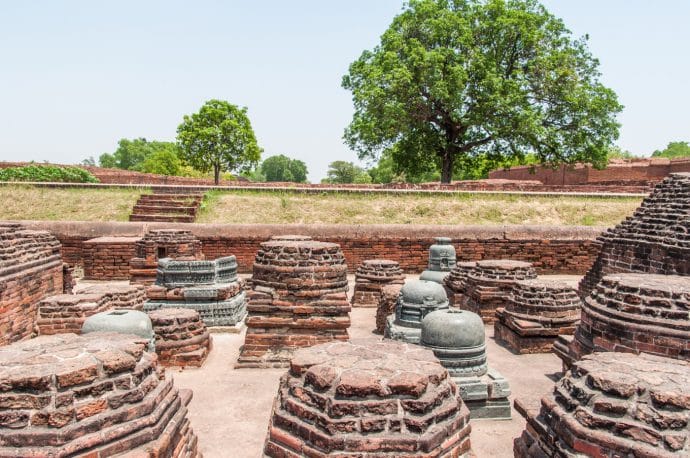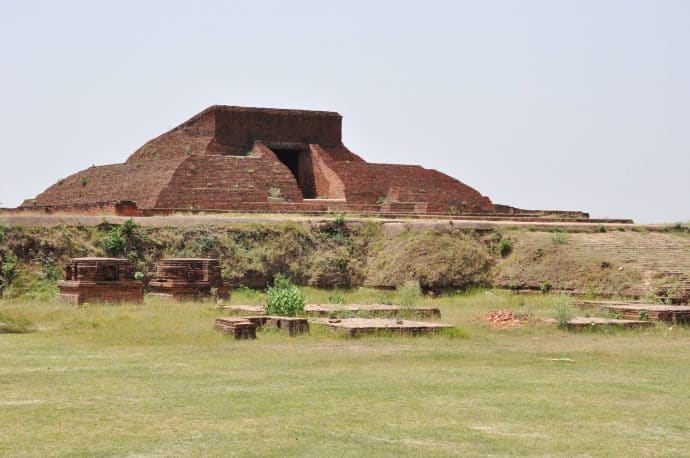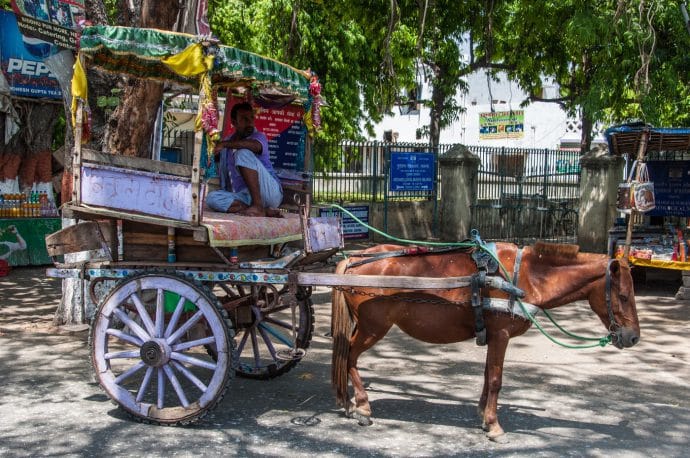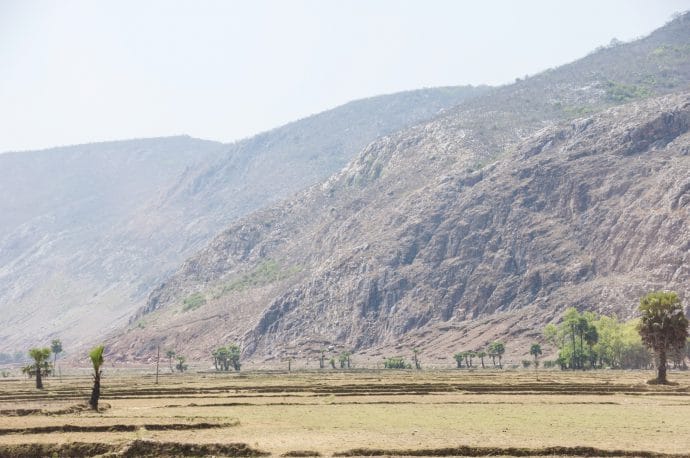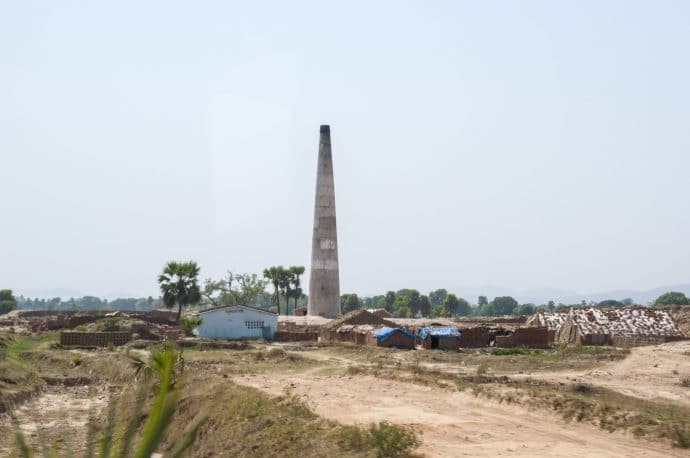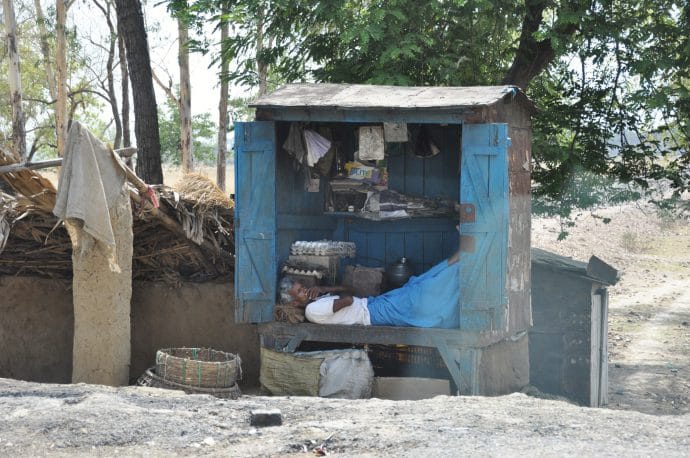
A short detour to the ruins of Rajgir and the ancient university of Nalanda
For this 4th day in India, we decided to make a one-day detour north of Bodhgaya, more precisely towards Rajgir and Nalanda. The 2 sites are about 15km apart and are therefore done in the same day.
As it is still about 100 km from Bodhgaya, we needed a means of transport and for that we thank again the Thai temple which will allow us to have our personal driver, certainly not free, but it is still a plus, especially because at least he is trustworthy, no need to look further and no need to fight to get a reasonable price.
So we left early, heading for the ruins of Rajgir, formerly known as Rajagriha.
The Ruins of Rajgir
The city was surrounded by a great wall and had a fort, a prosperous city where Buddha came many times to these hills to meditate and teach.
Today, there remain some traces of this glorious past.
The journey is in the middle of a semi-desert countryside, very dry. We pass between 2 hills where we can see the remains of the old wall of 2000 years and more and arrive a few kilometers further on at the site allowing to climb on one of the hills where Buddha came to teach.
To get there, you have the choice between a very local cable car (60 Rs) or going up on foot... We will choose the cable car, because Jitima is still limited in terms of walking.
At the top, we find, in addition to the view of the entire surrounding plain, a temple without any particular attraction and a stupa of peace, donated by Japan (there are 80 stupas of this type in the whole world, including one that we saw in Sri Lanka a month earlier). Note the presence of monkeys at the top (langelles)
This place, locally called Gridhakuta (translated according to sources as "mountain" or "peak of vultures" or Eagle Peak) includes, in addition to the Japanese temple, the remains of a temple a little lower down, as well as the Saptaparni cave which is said to have served as a place of "residence" for the Buddha and is said to be the place where the first Buddhist council was held 2 months after his death.

Below Vulture Peak are the remains of a temple, it is here that the Buddha is said to have given his second great teaching (a sutra called prajnaparamita, now known as the Heart Sutra).

A peace pagoda donated by Japan (like the one seen in Galle in Sri Lanka). The Vishva Shanti Stupa dates from 1969.
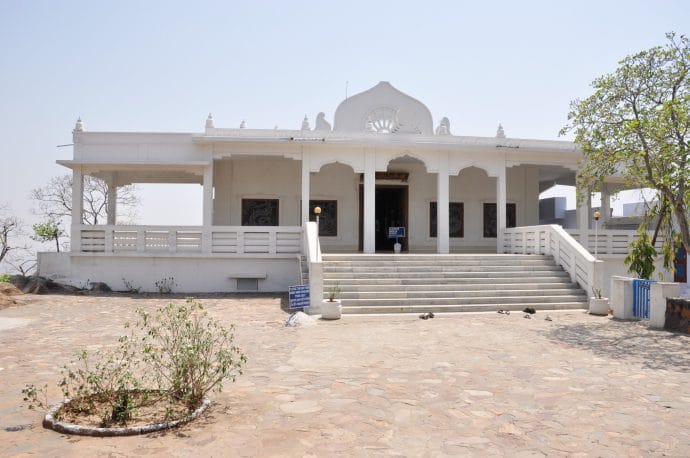
The temple on top of the hill that photos are forbidden inside. A guy was beating a drum rhythmically for every donation (almost all the time, so…). The reason for the presence of these temples is that the hills were used as places of teaching for Buddha.
We will quickly stop at the remains of the prison of Bimbasara, one of the first kings of one of the sixteen ancient Indian kingdoms, Rajgir was then the capital of this kingdom of Magadha, he was imprisoned by his own son.
Finally, we went to the Son Bhandar caves, which I'm not sure I understand the whole story of, except for the obvious traces of Buddha sculptures and therefore must have had a religious vocation. The guide on site was not very helpful, because his accent was rather incomprehensible (and yet, we are far from being bad in English...)
This was the last site visited on Rajgir before moving on to the ancient Nalanda University.
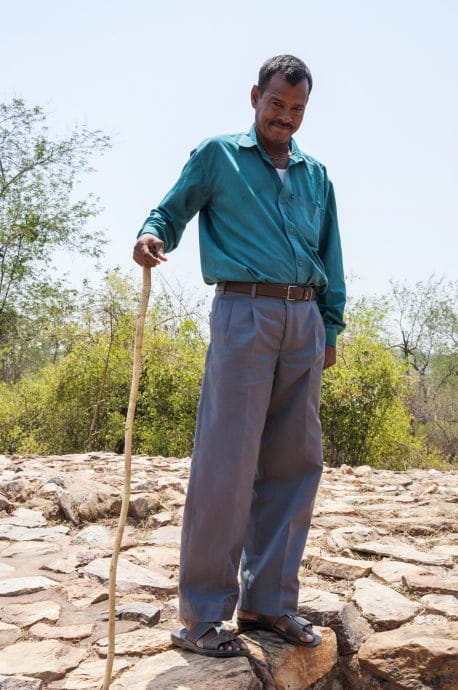
Our imposed "guide" of the moment... He stays here all day to explain what these ruins are to the few pilgrims like us... Knowing that he doesn't even speak English... it was quite comical in a way.

We arrive at the Son Bhandar caves, which means "golden warehouse" and helps to maintain a legend that a groove in a wall that looks like a door hides a real treasure. These caves have fine engravings of Buddhas and others clearly indicating a religious function 1500 years ago.
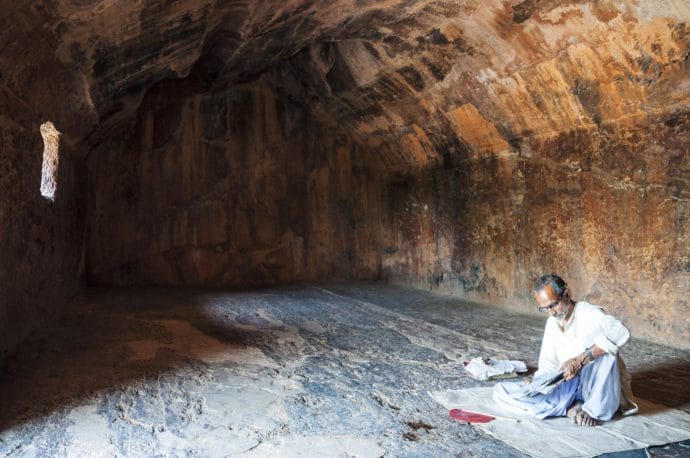
At least it's cool... The man reading his newspaper is the site's caretaker/guide.
You don't have much choice if you don't want to pay... Here, he speaks English, but with his accent, I honestly didn't understand everything at the time...
The ancient Buddhist university of Nalanda
After this visit (rather express, I must say) of Rajgir, we went to Nalanda, which was for me the main reason for our coming to the area.
Nalanda was, as the title indicates, a university, created in the 2000rd century, it was one of the first in the world and its specialty was obviously given the history of the place Buddhist studies, but not only that, at its peak the approximately 10 professors taught science, philosophy, literature or mathematics to approximately 000 students, who came mainly from Asia.
A description of campus life, which also included dormitories for students, was provided by a Chinese monk named Xuanzang who travelled to India twice.
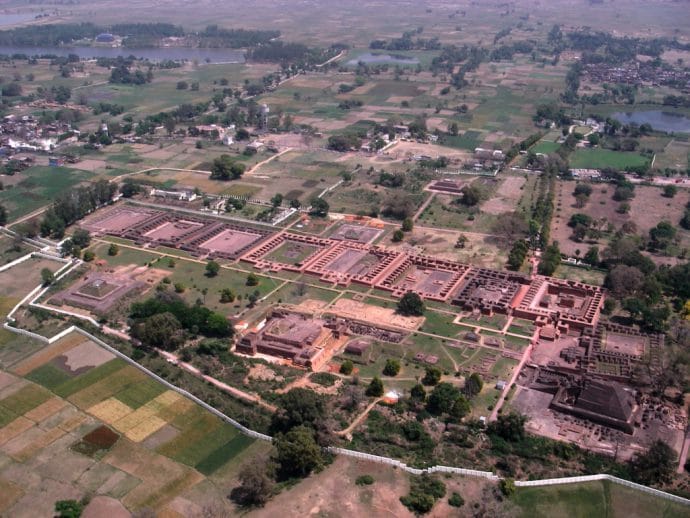
Impressive view of the site from the sky (Photo credit)
But while Buddhism was already somewhat in decline towards the end of the 1197th century, the religion was particularly damaged when the Turkish Muslim armies landed at Nalanda in 30, sacking the university which would never recover, despite an attempt some XNUMX years later, Turkish soldiers would return to chase the last students and professors in a university already in ruins.
A little anecdote, at one point it was considered to bring the site back to life, because a project for a new university in Nalanda is indeed current. The site being obviously too damaged, it was preferred to allocate a new plot of land some 20km from this old university.
The aim is to restore the nobility of the Bihar region by giving it a modern university that can welcome students from all over the world, but also to prevent the "brain drain", with many Indians leaving to study in large universities abroad without necessarily returning...
This legacy of the old university should see its first faculties open at the end of next year, for fans, this is what it should look like:
To return to the old one, which we have just visited, here is a plan of the place:
There was a large stupa (which was enlarged 6 times) and up to 5 temples spread across the campus. If you imagine the site complete (it's not easy) and teeming with life, it must have been an incredible university.
It was not easy to visit and appreciate such a place with the overwhelming heat of this day, but I do not regret the trip.
The ticket price is only Rs 100, which is Rs 200 for both of us, as much as I used to give to a beggar in Rajgir…
Next to the site, there is apparently a museum, but with the heat and fatigue, we preferred to return towards Bodhgaya.
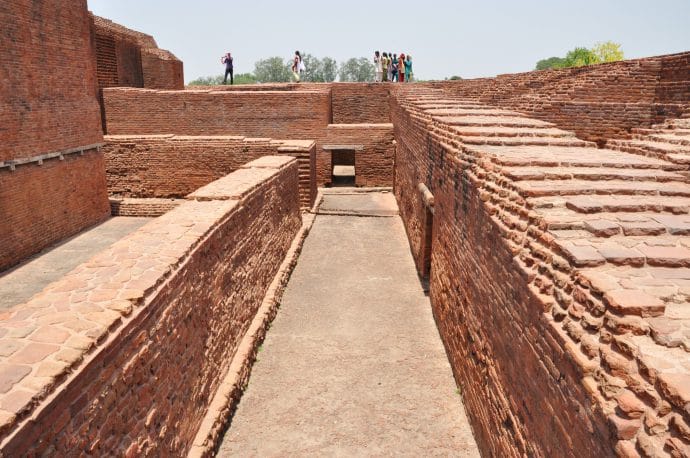





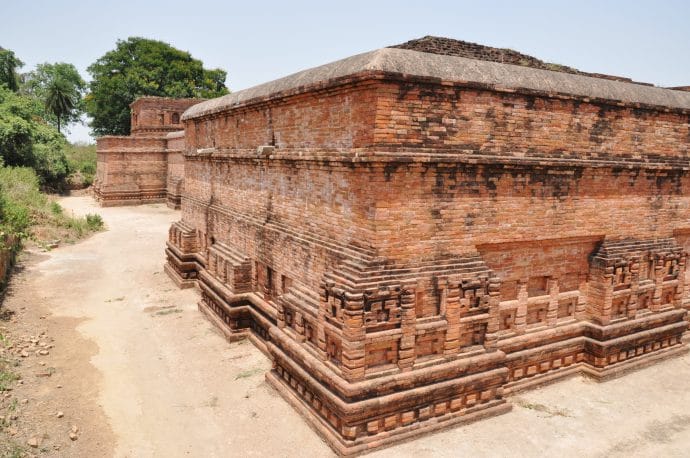
The renovation made it possible to clear away these buildings which had almost disappeared under mounds of earth.



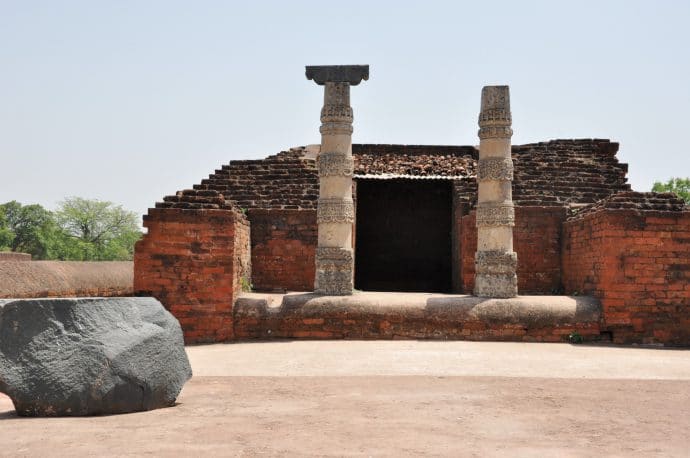



As clearly no one walks that far, the ruins at the end of the site are a little more 'neglected' with the tufts of grass abounding.
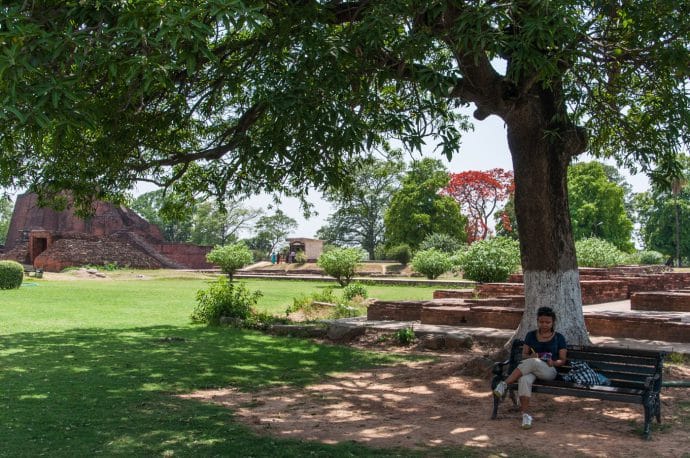
Jitima did not walk all the way, she took a drawing break in the shade of a tree, essential given the heat that day.
Back to Bodghaya
A few photos taken on the way back to Bodhgaya, to round off this little extra visit to the sacred city.


